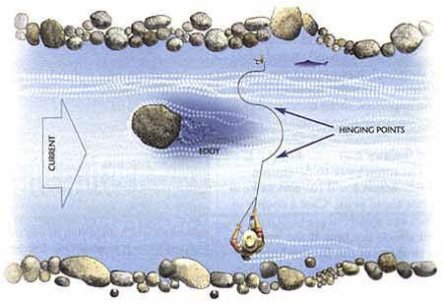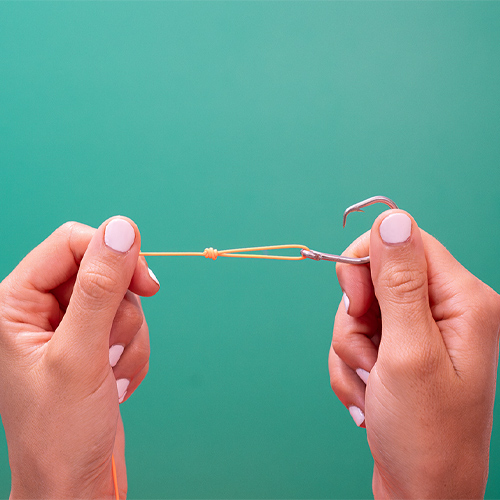Fly Line Mending
In fly fishing, mending is the ability to position the fly line on the moving current in a manner which counteracts the effects of the current, thus allowing the fly to present itself naturally on the water. Mends can be upstream, downstream, and often contend with varying speeds of water
Fly Line Mending Basics
Most beginners to fly fishing aren’t introduced to mending right away, as fly fishing basics like rigging and casting naturally take precedence. But make no mistake, learning fly fishing mending techniques will prove essential to consistently successful fly presentations, as even dry fly fishing methods call for fly line mending.
Why Is Fly Line Mending Necessary?
The simplest answer: to extend the amount of time your fly or nymph dead drifts. When executed properly, fly line mending decreases the effects of drag so the lure looks to be floating naturally with the current as opposed to being dragged by or held in a current as it passes. Once you get the hang of fly fishing line mending, your lure won’t seem to be attached to a leader at all until, of course, the mended line catches up to the lure and submits it to the effects of drag once more.
In any event, the key to consistently dead drifting across water of different speeds is in creating hinging points. Hinging points are created wherever different speeds of water encounter each other. That’s it. You’ve probably inadvertently made several hinging points without knowing their significance. Now that you do, let’s figure out how you can use these hinging points to your advantage when mending fly fishing line.
Upstream Mend
As can be seen in the example below, the fly is in a slower current than its line, which allows an upstream mend (Figure 1) to extend the fly's drift.

Figure 1 - Upstream Mend - The basic upstream mend is used when you must cast across fast water. By throwing the line upstream, the angler delays the moment when the line starts pulling the fly downstream. The key here is to make the line hinge right on the seam between the fast water and slow water.
While the example describes a method for casting across fast water, one can also upstream mend by facing and casting upstream, then lifting the tip of the rod while pulling in the line as the lure approaches. Remember, the key is to make your lure look as natural as possible as it floats along with the current. And to keep the tip of your rod up. You don’t want your fly taking a swim.
Double Mend
Rivers and streams are dynamic. Some parts will always move faster or slower than others. These changing speeds within the same body of water are what makes fly line mending a consistent challenge. And why you need to learn a variety of fly fishing mending techniques to handle a variety of conditions.
Possibly the most difficult mend to master, yet being the most fun mend to show off, is the double mend (Figure 2). The fly fishing mending technique allows anglers to fish across more of the water, since they can make multiple adjustments to the fly line to extend the dead drift.

Figure 2 - Double Mend - In this situation the angler is casting across an eddy (which will pull his line upstream) and fast water (which will push his line downstream). He will therefore have to make two mends. Always mend from far to near: First make the upstream mend, then the downstream mend. The key here is getting the line to hinge on the seams of the various currents. You can control the hinge point by how high you lift your rod tip and how much line you pick up off the water.
Reach Cast
One of those dynamic conditions noted above is the presence of calmer waters. Not completely still, but a section of the river or stream where there is less of a difference between the various currents. This may be the best time to ignore mends with hinging points in lieu of a reach cast, which allows you to throw a mend into the line before the fly hits the water. For more information about reach casting, visit the Surface Techniques page.
Images, Captions and Mending Techniques section credit: A Mending Primer, Midcurrent.
KEEP LEARNING

TakeMeFishing x Teen Vogue
Join us on a creative journey as fashion designer Ahmrii Johnson walks us through her collaborative vision and process with Teen Vogue and fashion brand, Rentrayage, to create a special piece.
LEARN MORE

First Catch Center Trailer Gallery
FCC Trailer Photo Gallery
LEARN MORE

How to Tie a Duncan Knot
Learn to tie a Duncan knot by following these five simple steps. Watch our new video.
LEARN MORE


.png?lang=en-US&ext=.png)